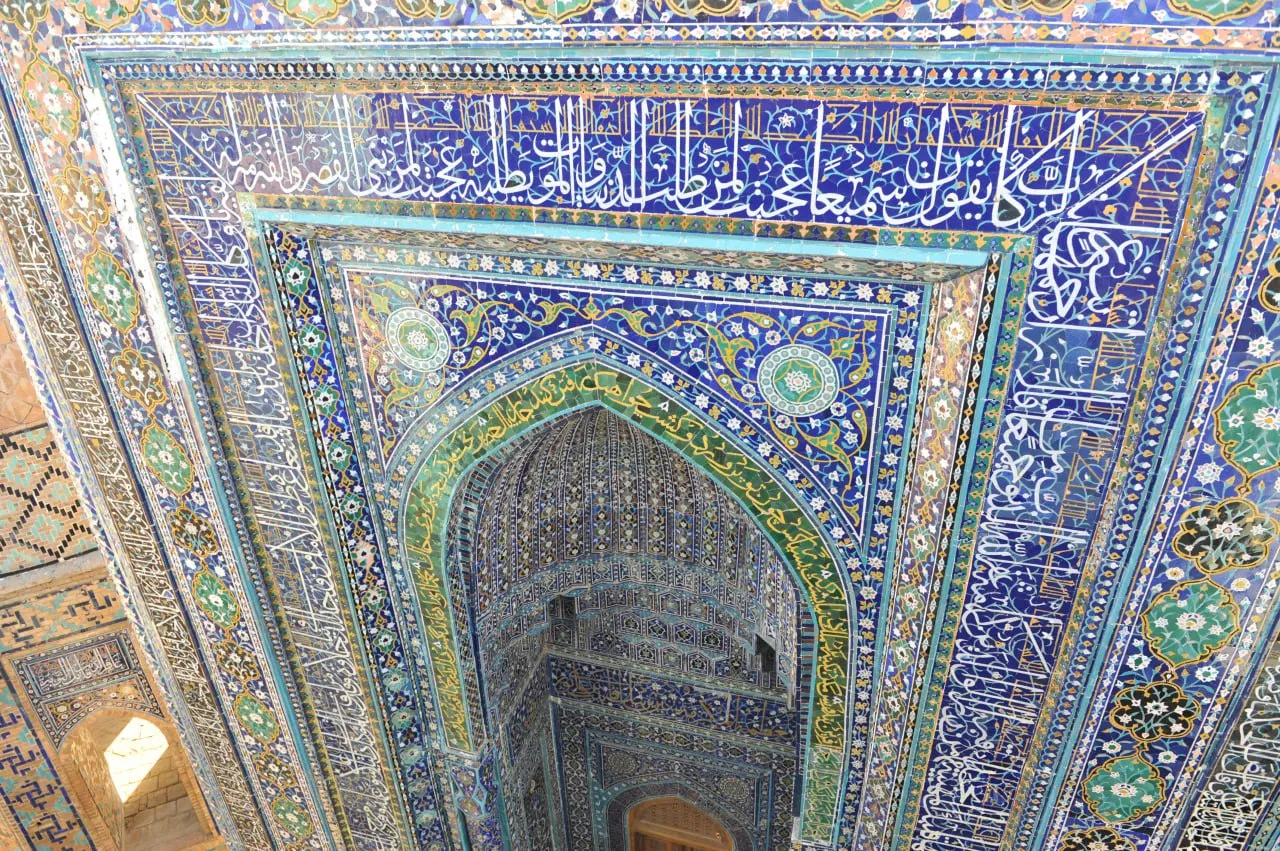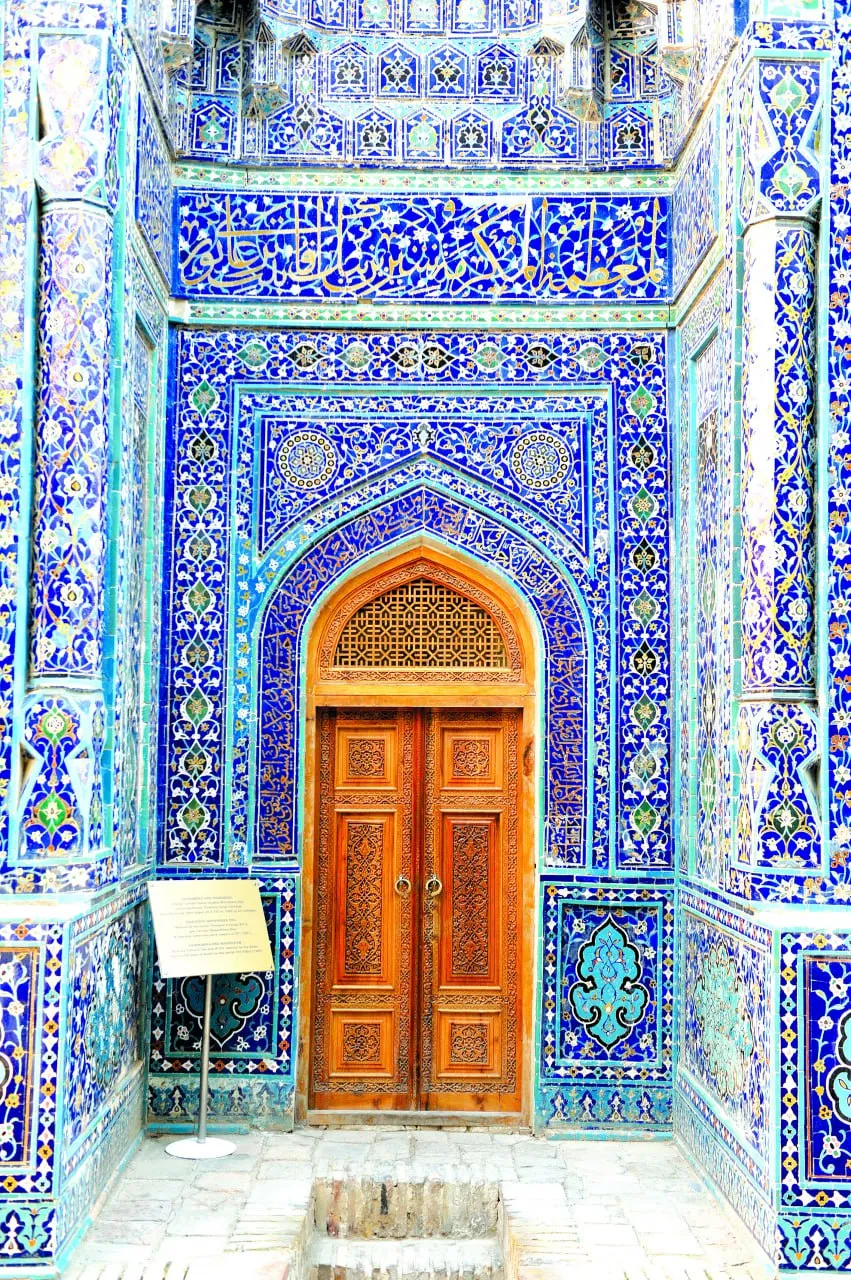It is an octahedron in plan which in former times was crowned by a blue dome. In the process of research conducted in the early 1960s of the last century, it was found that below the building floor there was a crypt with four female burials.
All the façades of the building are similarly decorated. The archways of each facet are faced with brick mosaic. The mosaic sets mainly of blue color and its hues are inserted in the tympana over the arched apertures. The mausoleum interior is decorated with blue paintings on the ganch background with inserts of red fragments.
Facing of the walls with brick and color mosaic in the form of bright multicolored inserts and mural paintings on the ganch plaster are the techniques of décor that, in experts' opinion, are specific to architecture of Ulughbek's time and can be found on the buildings of the first half of the 15th century in Shahi-Zindah. They are, for instance, such constructions in the lower group as the Qazy-Zade Rumi mausoleum and the entrance portal.
The remains of two more mausoleums dating back to the late 14th century were discovered to the north of the «Octahedron» in the process of archeological excavations in 1963. They were the remains of walls and step-shaped majolica tombstones.
Apparently, on the arch tympana (on eight sides) there were inscriptions which have been completely lost as it was mentioned by V. A. Shishkin (Nadpisi, p.26). During the 2004-2005 restoration, Hadithes were inscribed in these places.
You can read more about the inscriptions on the buildings of the memorial ensemble in the book-album “Samarkand. Shakhi-Zinda” series “Architectural epigraphy of Uzbekistan”.


